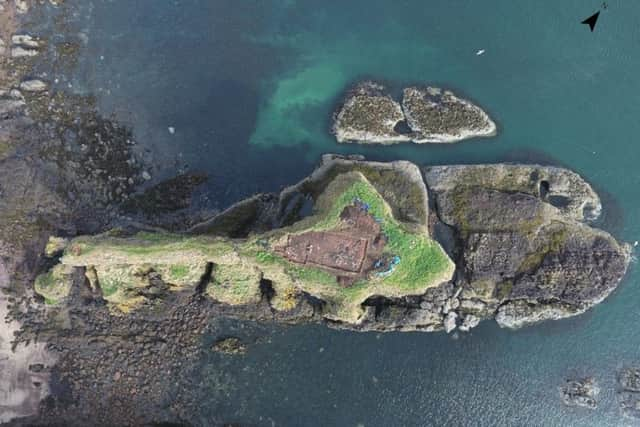History of Pictish stones '˜rewritten' by breakthrough research


A breakthrough in the understanding of the ancient stones has been made following excavations at Dunnicaer sea stack, the site of a Pictish fort just south of Stonehaven in Aberdeenshire.
It is now believed that the site is home to the oldest Pictish stones in Scotland with a new dating system placing the remnants to as early as 3rd Century AD.


Advertisement
Hide AdPreviously, scholars dated the country’s earliest Pictish stones to anywhere between the 5th and 7th centuries.
Dr Gordon Noble, head of archaeology at the University of Aberdeen, led the research with dating experts at National Museums of Scotland.
He said the new dating approach, which deploys highly accurate date testing on items found surrounding the stones, had significantly “pushed back” the chronology of the mysterious monuments.
He said: “Establishing an outline chronology through a combination of direct dating, modelling and examining associated dates from archaeological excavation is helping us rewrite the history of these symbolic traditions of Northern Europe and to understand more clearly the context of their development and use.
“In the last few decades there has been a growing consensus that the symbols on these stones are an early form of language and our recent excavations, and the dating of objects found close to the location of the stones, provides for the first time a much more secure chronology.
“While others had suggested early origins for this system no direct scientific dating was available to support this.
Advertisement
Hide Ad“Our dating reveals that the symbol system is likely to date from the third-fourth century AD and from an earlier period than many scholars had assumed.”
It is now believed the symbols carved into the stones were a form of naming system that communicated the identities of Picts.
Advertisement
Hide AdThis was being done at the time other writing systems were being developed across Europe, such as like the Ogham script of early Ireland and the runic system developed in Scandinavia.
The dating evidence drew on excavation work at a promontory fort at Dunnicaer, where unelaborated carvings, generally of a smaller size and less standardised when compared with the later standing stone monuments, had been recovered in the 19th century.
Work at the dramatic site close to Dunnottar Castle revealed that stones probably came from the rampart of the fort.
Dating of the site conclusively showed that the settlement was at its height in the third to fourth centuries AD.
Meanwhile, direct dating was also carried out on bone objects and settlement layers from sites in the Northern Isles.
This showed the use of the symbol system in the fifth century AD in the far north, in areas that were at the periphery of Pictland.
Advertisement
Hide AdBayesian modelling, a technique for refining and narrowing down the probabilities of radiocarbon dating, was also used to provide greater clarity on the dates of Pictish settlement at Rhynie in Aberdeenshire, famous for the Rhynie Man stone.
This showed that a fort with Pictish symbol stones standing within a series of ramparts and palisades dated from the late fourth to early sixth century AD.
Advertisement
Hide AdDr Martin Golderg of National Museums Scotland added: “The general assumption has been that the Picts were late to the game in terms of monumental communication, but this new chronology shows that they were actually innovators in the same way as their contemporaries, perhaps more so in that they did not adapt an alphabetic script, but developed their own symbol-script.”
Dr Derek Hamilton, of Scottish Universities Environmental Research Centre, undertook the Bayesian modelling.
Dr Hamilton said: “Bayesian modelling has revolutionised the world of radiocarbon dating, helping us to develop more refined chronological frameworks than was previously possible. The statistical modelling of the dates from Pictland is beginning to set our understanding of this tradition on a more solid footing than ever before.”
The research is now published in archaeology journal Antiquity.
